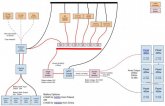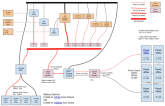Hey everyone,
I have been reading and info gathering for the last few weeks to get my head around getting my first solar system, I am keen to build myself and not purchase a "package" (cells, inverter, batteries, bms etc) as I wish to understand the system the best I can and also grow it over time. Im really lacking the confidence to do this and the temptation of a "package" buy has been getting more tempting, until I found this forum
While there is some great details here, we all have slightly diffrent needs and I am keen to get some direction and not assume other setups are right for me. I feel slightly lazy \ cheating making this post and appreciate any feedback - I just need one last push before committing to buy!
Quick intro to my situation \ needs...
Main aim now is to heat water and charge a modest battery bank so we don't have to rely on having a fire come summer for hot water and enough battery capacity for me to start tinkering with DC lights and USB-C sockets. My current thoughts are...
Many thanks all, sorry for the long post, I hope there are a few keen eyes willing to dish out some advise
Pic of our new home and sawbuck project from last weekend, behind me is where the solar panels would go

I have been reading and info gathering for the last few weeks to get my head around getting my first solar system, I am keen to build myself and not purchase a "package" (cells, inverter, batteries, bms etc) as I wish to understand the system the best I can and also grow it over time. Im really lacking the confidence to do this and the temptation of a "package" buy has been getting more tempting, until I found this forum
While there is some great details here, we all have slightly diffrent needs and I am keen to get some direction and not assume other setups are right for me. I feel slightly lazy \ cheating making this post and appreciate any feedback - I just need one last push before committing to buy!
Quick intro to my situation \ needs...
- Located in South Poland with wife and child, I am English from London
- Been renovating a log cabin approx 200 m2 for 3 years, well insulated, air tight-ish, 3-phase power. Just moved in
- Have ran DC cabling 4mm2 along with AC in all rooms - plan is to have lights and USB-C powered by DC
- 800 ltr thermal store thats connected to a fire with back boiler
- Land that is south facing and gets a lot of light over winter and summer: Approx 50m of cable run to utility room
- Deep well pump that runs for 1 hour a week to fill two holding tanks on the hill: 550W
- Looking at PV only as like the flexibility / simplicity and wish to avoid solar thermal panels
- Not interested in being grid tied
Main aim now is to heat water and charge a modest battery bank so we don't have to rely on having a fire come summer for hot water and enough battery capacity for me to start tinkering with DC lights and USB-C sockets. My current thoughts are...
- 48v system
- 48v DC immersion heater
- mppt controller to charge batteries and then any surplus power direct to immersion heater
- solar tracker - will try and build my own, looking at ideas now
- The ability to monitor the mppt controller and any other parts of the system worth monitoring via Home Assistant
- 400w panels seem like a good price to watt, so maybe start with a few of them
- Larger battery bank - unsure of our true needs right now
- Supply a single phase of AC to the house
- Supply 3 phase to the workshop
- Ability to divert surplus power to mutiple destinations, immersion heater \ well pump \ smaller pumps to move water for the fields
- Ideally, off grid (adjusting our power consumption to support this)
- Is 50m from panels to batteries, etc classed as a large distance?
- I like the sound of the all in one units (MPPT, Inverter, BMS, etc) as I am not very experienced in this area and they seem "safer" for me to setup. Or, would it be much more flexible based on my needs to have a full DIY solution?
- How would I divert surplus power? I hear a lot about "dump loads" for wind and units to detect if you are passing to the gird and diverting this back to a AC immersion or direct panel to DC immersion heater but not my example use case. Ideally I would wish to control such devices via relays and use my own logic to decide what gets the surplus power (DC immersion heater, deep well pump, other pumps for moving water for the fields)
- Sounds like the LiFePO4 batteries are popular here, assuming as long as I end up with 48v im good here and its best to invest in LiFePO4 now and grow the bank as needed
- Really need some assistance regarding the schematics of such a setup, can anyone recommend a book \ guide on how to cover the basics? Wiring, correct fuses, etc
- How best is it to match the DC immersion heater to the correct panels, if I look at getting a 48v 2000w immersion heater assuming I would want a min 2000w of solar panels? Or is this too much messing around and its best to have a AC immersion heater via a inverter? Or is that bad for the batteries (so I have read)?
- How would I connect the inverter to the house phase, is it as simple as plugging it in!? Would I need to cut my supply from the grid to pull the power from my batteries via the inverter?
Many thanks all, sorry for the long post, I hope there are a few keen eyes willing to dish out some advise
Pic of our new home and sawbuck project from last weekend, behind me is where the solar panels would go





